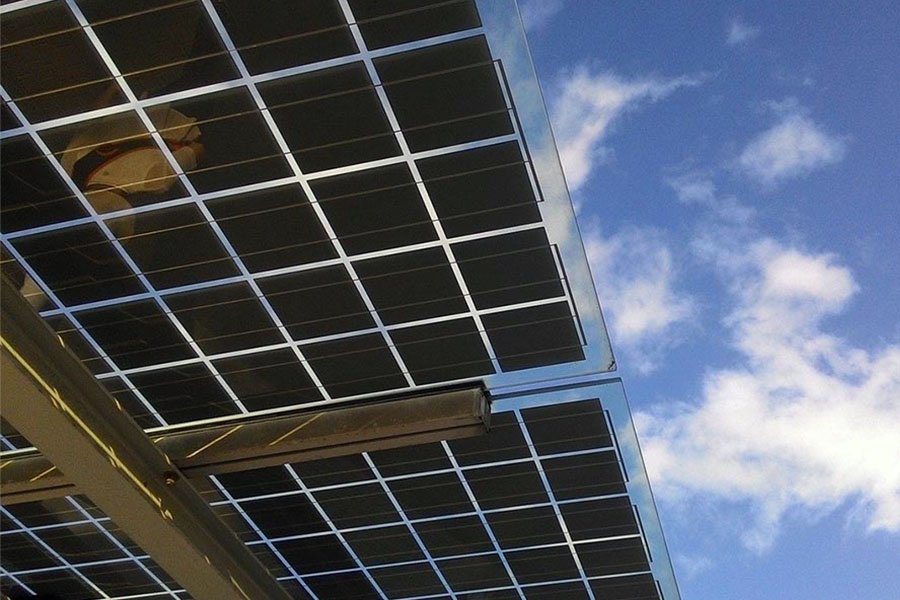Solar energy is gaining more popularity as it allows us to exploit the clean energy of the sun. A bifacial solar panel is one variety of solar panel that receives a high level of attention. There are advantages and disadvantages of these panels that will be explained in this blog in a way that is easy to grasp.
What are Bifacial Solar panels?
There is on the face of the most solar panels a set of solar cells that face the sun. The difference in bifacial solar panels is that they have cells on the front and the back of the panels. It implies that they are able to absorb the sunlight at the top, as well as the sunlight that reflects off the ground. Often, the rear part has a clear glass or plastic lid directly on it to enable the passage of light that strikes the cells.
Advantages of Bifacial Solar Panels
1. More Energy from Two Sides
Bifacial panels do not receive sunlight on a single direction only. This assists them in generating electricity as compared to other typical panels. The light receiving ground at the end of the panel bounces back to the panel’s backside and provides an extra source of power. This may boost the development of energy by up to 10 percent or 30 percent or higher, based on the surface beneath the panel and other adjustments.
2. Improved Work under Various circumstances.
Such panels are more effective on cloudy days or in lower light direct sun. They can capture the reflected light; therefore, even in the absence of the sun shining on them, they are able to generate power. Moreover, when the panels are mounted higher than the ground, they might capture more light on the sides and below.
3. Longer Life Span
Most of the bifold panels are equipped with a piece of glass on either side, which makes them much firmer. Glass will guard the solar cells against adverse weather conditions, dust, and rain. This also assists them in being capable of a time span as compared to ordinary panels, which have only one glass side and have a plastic backing.
4. Ideal for Certain Locations
Bifacial solar panels are good for places where the light can reflect well. For example, if the ground is covered with white gravel, sand, or concrete, the reflected light increases the energy the panel creates. This makes them popular for open spaces, flat roofs, and solar farms.
Challenges of Bifacial Solar Panels
1. Higher Cost
Bifacial panels usually cost more than regular solar panels. They use extra materials like two glass sheets and special solar cells on both sides. This makes production more expensive. However, their higher energy output can balance this cost over time.
2. Need for Good Installation
To get the most power, bifacial panels need careful setup. The place below the panel must reflect enough sunlight. For example, dark or grassy surfaces do not reflect much light, so panels may not work as well there. Also, the angle and height of the panels matter. If they are too close to the ground or not tilted correctly, they will get less reflected light on the back.
3. Complex Energy Calculation
It is harder to measure how much energy bifacial panels will produce compared to regular panels. This is because the light that reaches the back depends on many factors like weather, ground surface, shading, and panel tilt. Builders and engineers have to use special tools and software to estimate the output.
4. Fragility and Weight
Glass-glass bifacial panels can be heavier than usual panels. This means the structures holding them must be strong enough. Some roofs or mounts may need upgrades to safely support them. Also, glass can break if hit hard, so extra care is needed during transport and installation.
Conclusion
Bifacial solar panels are an exciting option because they use sunlight more fully by catching it on both sides. They make more electricity, last longer, and work well in some special places. But they cost more, need proper setup, and careful planning to reach their full potential. For people or companies ready to invest a bit more, these panels can be very rewarding.
In the future, as technology improves and costs go down, bifacial solar panels may become a popular choice for many solar power projects. They show a smart way to make the most out of the sun’s power and help create cleaner energy for the world.

